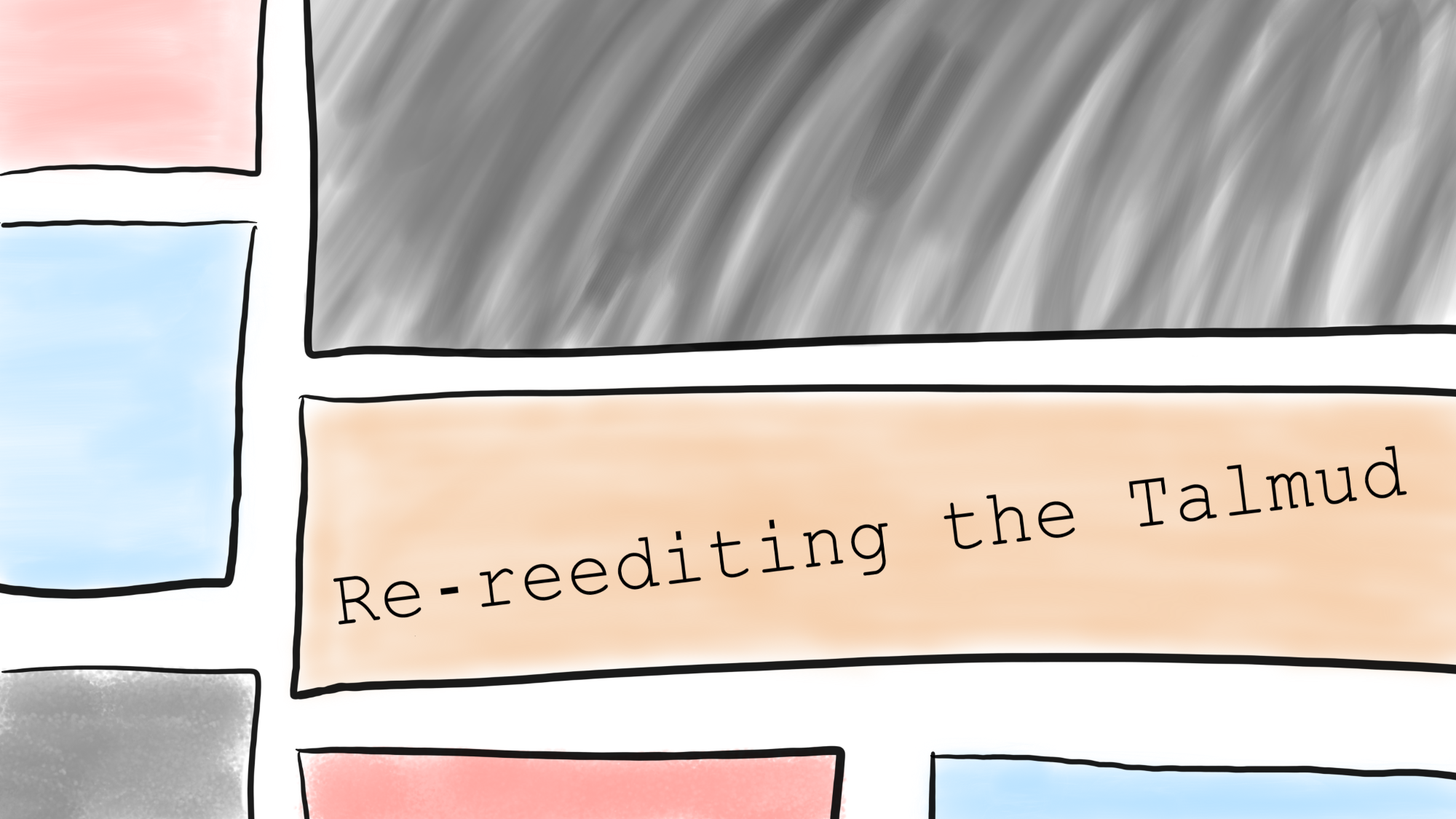The Talmud is an old book, going back over 2000 years. Thousands of people over thousands of years have helped write, edit, compose, censor, un-censor, and publish it. They then translated, commented, critiqued, learned, and interpreted it through the publication of thousands more books. There have been more editions and versions of the Talmud that you can possibly record.
Dan Jutan and I wanted to be a part of this long tradition and bring the Talmud into the digital age. The most popular edition of the Talmud is the Vilna Shas, with its famous layout (often referred to as Tzurat Hadaf) being a comfortable companion to anyone reading the Talmud. It is possible to find pdfs and free translations of every page, there are even online interactive tools, but noone has effectively ‘republished’ the Talmud online, making it native to the internet.
That is what we tried to do, but in our journey, we have found that remaking the Talmud online is not as easy as it looks. We have had to rewalk the steps of an editor whose name is no longer remembered. We have had to place ourselves in the shoes of a printer whose press has long since vanished. The story of the Talmud is long and complex, and the intentions and thoughts of the people who found themselves in that story are often lost to history. We have tried our best to reproduce their work, by crafting an algorithm that automatically lays out the Talmud online. We have taken the translators and put their words right on the page. We have allowed the many commentators equal right to the limited space of the page. We hope to give the reader their voice as well. All of this is not simple, and we are still working as there is much work to be done, but I would love to share with you some of the interesting problems that we have encountered on this journey.
In short, we had to take three paragraphs of text and turn it into this:

This may seem like a simple task, but the web is not built for this. Go to any website and you will never find three groups of text wrapped around each other in this way. This only exists in books, not the internet. That was the first problem: we had to create a new method of formatting text that was never meant to be put online.
The second problem we encountered was making sure the text was an accurate reproduction of the text as it is found in the Talmud. This is an extremely hard thing to do as noone who layed out the Talmud ever wrote a guide on their methods. We had to guess and stumble our way through fixing hundreds of problems that arose along the way. Even right now, what we have made is not perfect, but it will be very soon.
The third problem was figuring out how to put more commentaries on the page than there was physical room for. How do you allow the Ran and the Rif alongside Rashi and Tosafot? Well, you let them share the space giving each commentary a turn when the reader desires. We also wanted to fit a translation in, such that it would only be there when the reader needs help. These were all design considerations that had to be made.
The problems go on and on, and for each one we worked on many solutions. We hope that what we have created is a good start to what is to come. Regardless we are proud to present: A fully integrated Talmud that was built for the web (coming soon to a house of study near you).

